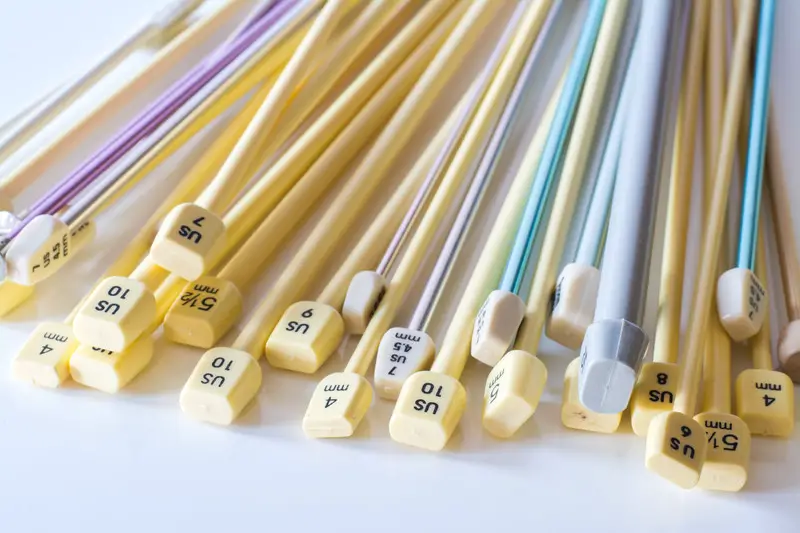Knitting Wool
Quick Links
- Archived - Ask a Knitting Question
- Basic Knitting Stitches
- Beginner Knitting Patterns
- Knitting Abbreviations
- Needle Sizes Chart
- Tension Squares
- Yarn Comparison Chart
FYI: This site receives a small amount in commissions from affiliate links and third-party advertising.
As you browse through your local craft store for knitting wool, you will be faced with a bewildering array of choices. Each type of yarn has its benefits and drawbacks and the type of yarn you choose will vary depending on what you intend to use it for.
As you have no doubt gathered as you wandered through this site, I prefer to work with natural fibres for hand knitting, as the resulting garment is not only better looking and more hard-wearing, but I find natural fibres easier to work with.
© Mr. TinDC | Flickr - Knitting Store
Not convinced? Maybe checking out the properties of real wool will help you decide. The main types of wool you will find include:
Of course there are also a number of different yarns available that are a mix of both natural and man-made fibres!
For example, Panda Heath (now discontinued) is 50% Wool and 50% Acrylic. I have used this yarn to make a scarf for my new sister in law, it is nice to work with and as it has nearly double the yardage per 50 gram ball of 100% wool, it is very economical.
Knitting Wool Weights
In Australia, commercially made knitting yarn is classified into plys (generally 2, 3, 4, 5, 8, 10, 12 & 16 ply), which basically tells you the relative thickness of the yarn. The lighter yarns (2, 3 & 4 ply) tend to be used to knit garments for children and babies or small items for adults like socks and scarves.
5 and 8 plys are general purpose weights and you will find patterns for these weights fairly easily as they can be used for almost anything, including garments for all sizes, homewares like cushion covers and blankets and even for making toys.
The 10 and 12 plys tend to be used for for adult garments and knit up beautifully in arans or other textured styles. The heavier plys (14, 16 and chunky plys) are popular with beginners as they knit up quickly.
If you would like to know more about each of the plys and what they are generally used for, visit my yarn comparison chart page.
Caring for your Knitting Wool
One of the reasons many people are reluctant to use natural fibres for their knitting is the perceived difficulty in washing their garments. Would you like to know the secret of safely washing wool? It is not as hard as you might think!
What about recycling your wool? Would you like to be able to reuse the wool from a garment that is too small, too big or out of style?
Spinning Your Own Knitting Wool
And then there is handspun yarn.
Because of it's very nature handspun yarn does not come in a standard size or ply like commercial yarn does, and you need to do a bit of playing around to work out the equivalent ply size.
© Inger maaike | Flickr - Hand Spun Wool
When you are creating your own knitting wool (by spinning it yourself) doing a tension square is a must, and I would so far as to recommend that you do a new one for each skein of wool that you knit.
It generally takes quite a long time to spin enough wool for a complete garment, and your tension while spinning may have changed over time. It is far better to be safe than sorry!
Couldn't Find What You Were Looking for?
Try searching the site using the search box below:

Recent Articles
-
Shetland Knitting and Shetland Knitters
Feb 07, 21 07:44 AM
Shetland knitting and the women in the Shetland Isle who create Shetland lace are among the best knitters in the world. -
Fixing Knitting Mistakes
Jan 28, 21 02:35 AM
When you are learning how to knit, you are going to make a few mistakes. It might not make you happy but fixing knitting mistakes is par for the course. -
Shetland Lace Knitting
Dec 11, 19 07:03 PM
Shetland Lace Knitting is a particular style of knitting that developed in the Shetland Islands and was one of the main exports of the Island early in the last century.
 >
>






